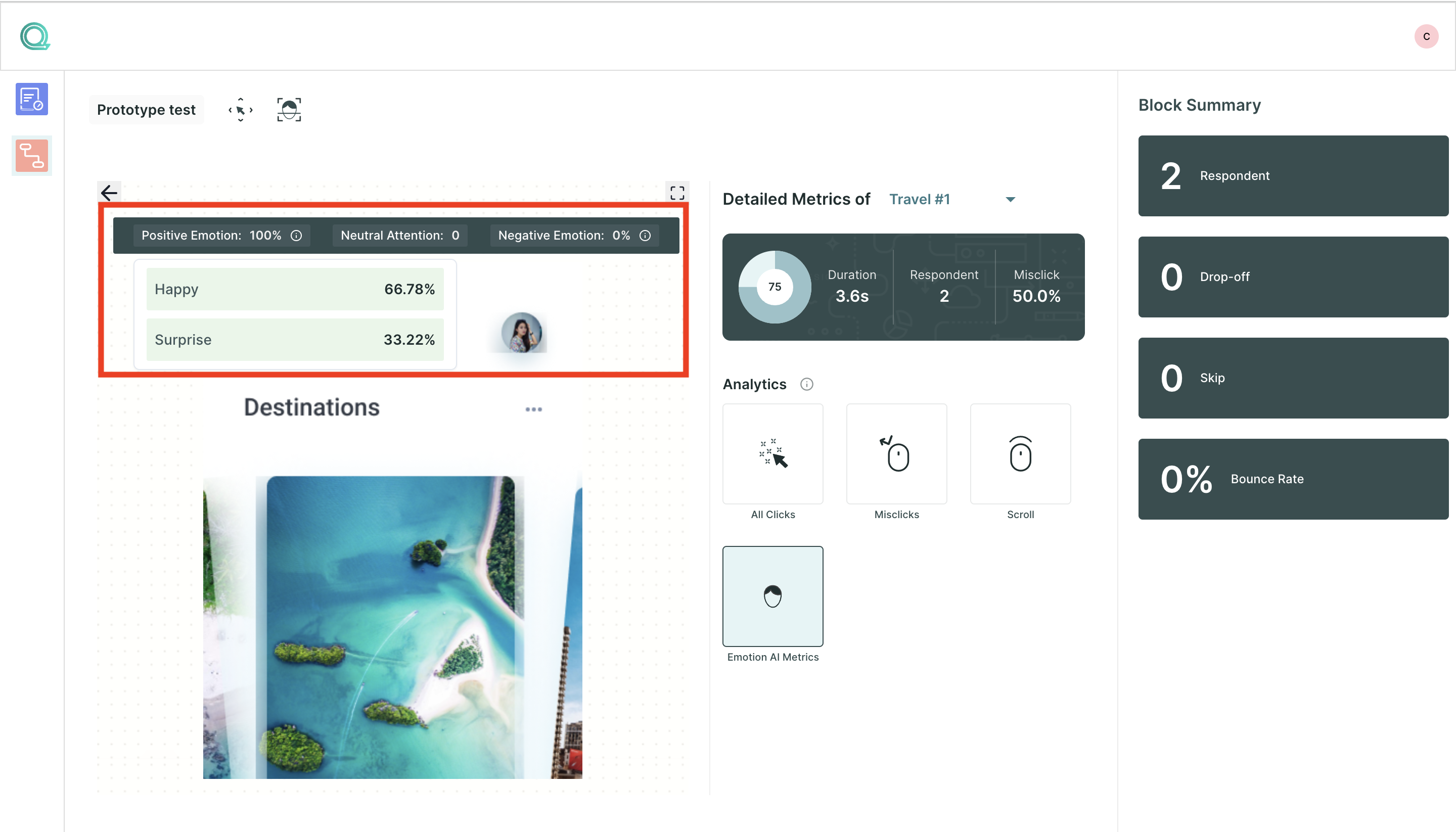Facial Coding
Facial coding is the process of interpreting human emotions through facial expressions. Facial expressions are captured using a web camera and decoded into their respective emotions.
Qatalyst helps to capture the emotions of any respondent when they are exposed to any design or prototype. Their expressions are captured using a web camera. Facial movements, such as changes in the position of eyebrows, jawline, mouth, cheeks, etc., are identified. The system can track even minute movements of facial muscles and give data about emotions such as happiness, sadness, surprise, anger, etc.
Insights From Facial Coding

By analyzing facial expressions captured during user interactions, facial coding systems can detect and quantify various emotional metrics, allowing researchers to understand users' emotional states and their impact on design experiences. Let's explore the specific metrics commonly derived from facial coding:
- Positive Emotion Metrics - Positive emotions play a crucial role in user satisfaction and engagement. Facial coding can measure several positive emotion metrics, including:
- Happiness: This metric indicates the level of joy and contentment expressed by users. By detecting smiles and other facial expressions associated with pleasure, users can assess the extent to which a design elicits positive emotional responses.
- Surprise: The surprise metric captures the degree of astonishment or amazement shown by users. It helps identify moments when users encounter unexpected or novel elements within a design, highlighting aspects that capture their attention and evoke positive emotional responses.
- Negative Emotion Metrics - Understanding negative emotions is equally important to address pain points and enhance user experiences. Facial coding provides insights into various negative emotion metrics, such as:
- Sadness: This metric reveals the extent of sadness or disappointment exhibited by users. Detecting facial expressions associated with sadness helps researchers identify design elements that may evoke negative emotional responses and require improvement or adjustment.
- Disgust: The disgust metric gauges the level of revulsion or aversion expressed by users. It helps uncover design aspects that users find unpleasant or repulsive, leading to negative emotional experiences. By identifying and rectifying these elements, designers can create more appealing and user-friendly interfaces.
- Anger: The anger metric measures the intensity of anger or frustration displayed by users. It indicates moments when users experience irritation or dissatisfaction with a design, highlighting areas that need refinement. Addressing these sources of anger can significantly enhance the user experience and reduce user frustration.
- Neutral Attention - While positive and negative emotions are essential, neutral attention provides insight into user engagement without explicit emotional responses. This metric reveals the level of focus and concentration users exhibit when their facial expressions do not convey any specific emotional cues. By analyzing neutral attention, researchers can gauge overall user engagement and measure the effectiveness of design elements in capturing users' interest.
Experience Facial Coding ✨
To experience how Facial Recognition works, click here: https://facial.affectlab.io/.
Once you are on the website, start Facial Coding by playing the media on the webpage. Ensure your face needs to be in the outline provided next to the media.
Please enable your web camera while accessing the application.
